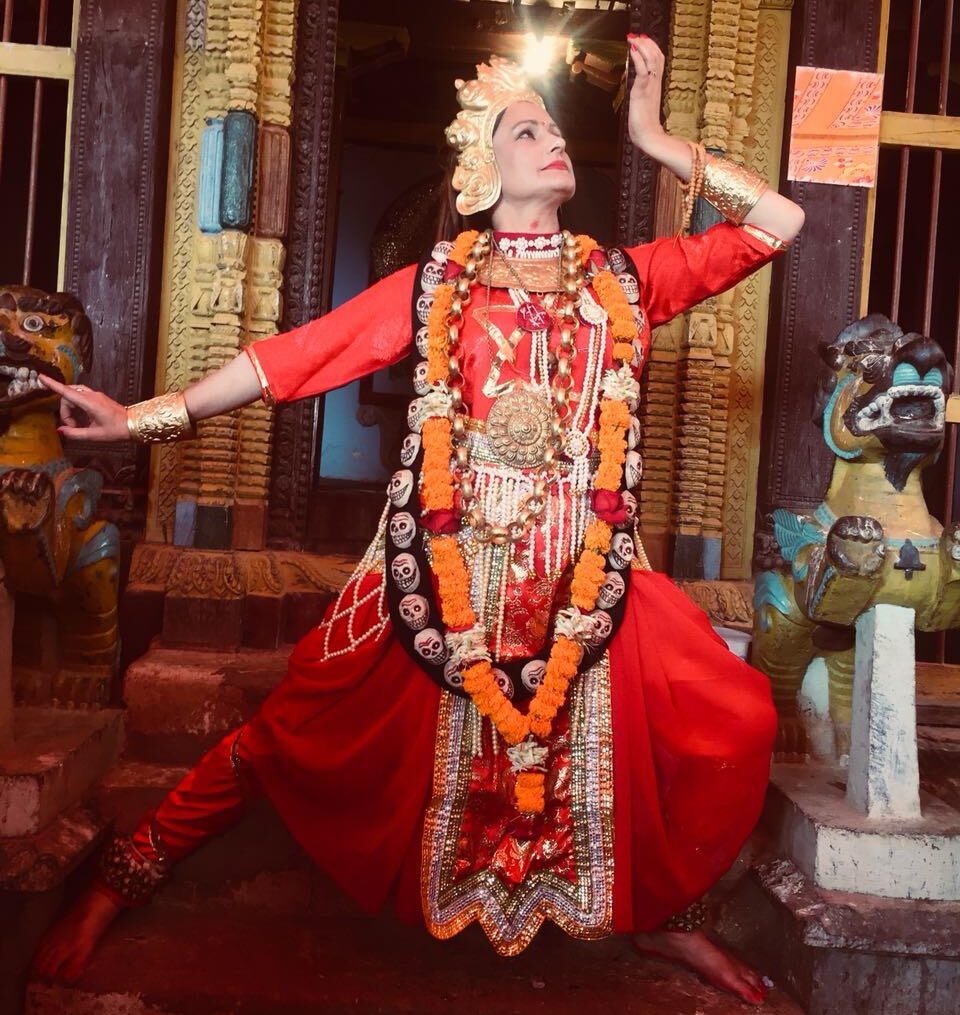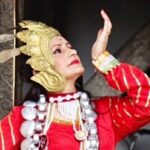While spending time in Nepal, I had the great privilege of meeting Punya Sagara, a dedicated practitioner and teacher of Charya Nritya — a traditional Buddhist dance form that has been preserved for centuries by the Newar Buddhists of the Kathmandu Valley of Nepal. I was incredibly fortunate to not only speak with her about the history and meaning of this unique practice but also to learn directly from her in person.
Charya dance is a deeply meditative and symbolic form of movement rooted in Vajrayana Buddhism. It combines physical gesture, visualization, music, and ritual to express and embody the qualities of the Vajrayana deities. Charya dance is not only a cultural treasure and an art form, it’s a spiritual practice in itself.
Punya Sagara’s unique journey — rooted in lineage, refined through academic study, and continually shaped by her life as a devoted practitioner, mother, musician, and teacher — makes her a vital link in keeping this sacred form alive for future generations. I sat down with Punya Sagara to discuss the history, meaning, and living practice of Charya Nritya. What follows is a glimpse into her insights and experiences, drawn from our conversation in Nepal.
What is Charya?
PUNYA SAGARA: The Sanskrit word “Charya” literally means “activities.” The Charya dances (Skt. Charya nritya) are the means of expression of prajna (intuitive wisdom) and are performed as dance art, enacting the “songs of realizations” (Charya songs), composed and handed down from the Vajrayana Mahasiddha masters from around the eighth to tenth centuries. The dance is performed to devotional songs (Charya Giti) and a variety of musical instruments, including ta (cymbals) and damaru (drum). It is performed in a profound meditative state where the dancer embodies a particular deity. This performance merges physical movement with visualization, mantra recitation, mudras (gestures), yogic postures, and the adornments of the crown and ornaments associated with the deity.
Charya dance is used as a powerful inner transformative tool that helps practitioners enhance their spiritual and self-growth.
Where and how did you first learn Charya dance? Who were your teachers or guides?
I personally was interested in Charya and other dances from a young age. At that time, I started practicing Vajrayana Buddhism under Ven. Vidyadhara Acharya Mahayogi Sridhar Rana Rinpoche, who encouraged me to take a proper initiation of Charya with late Ratna Kaji Guruju and Ratna Guruju, who both were Vajracharyas and lineage holders of Charya Nritya in Nepal. I then received a university degree in Charya and continued Charya dance practices with many other teachers. Gradually, Charya became not only a dance to me, but also a tool for enhancing my deity practices in Vajrayana.
Also Ven. Karma Thinley Rimpoche has been very supportive and advised me to learn many more Charya dances and also teach others under the name of Punya Sagara. However, it was when I met Ven. Dzongsar Jamyang Khyentse Rinpoche, who encouraged me to continue my practice and teaching of Charya dance, and provided me with a platform, that I began to reach and teach many students internationally.
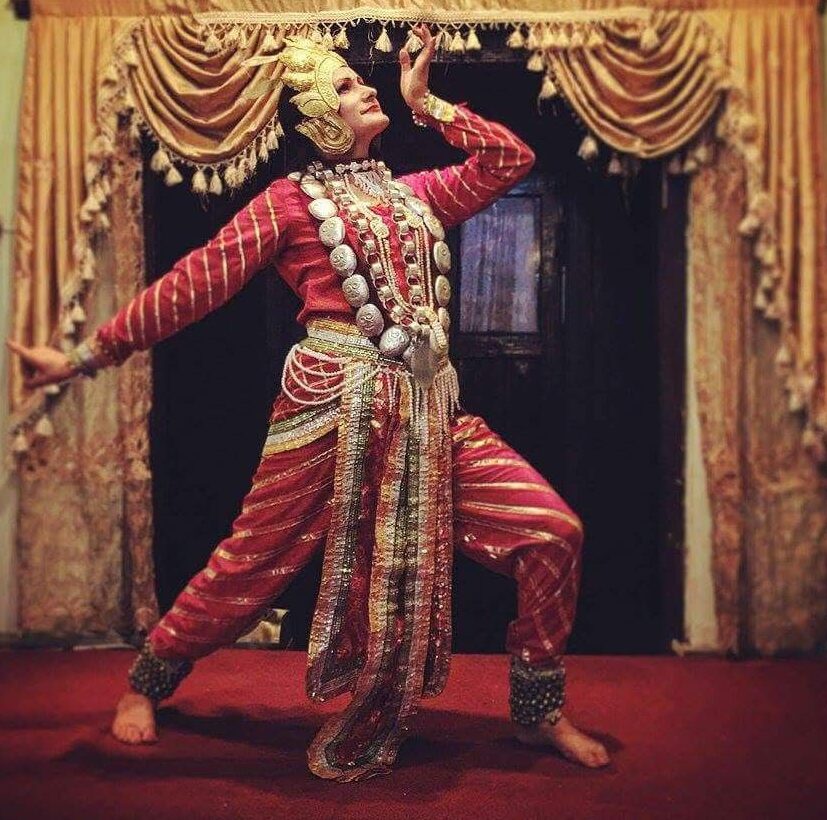
Where does Charya dance originate, and how is it traditionally practiced?
Charya is said to have been introduced by the Buddhist Mahasiddhas such as Tilopa, Luipa, Kodalipa, Kannhapa, Kukkuripa, from around the eighth to tenth centuries. The tradition then spread in India and into Nepal. However, all records in India have been lost, and the lineage has primarily been preserved by Newari Vajracharya priests, who have passed down this dance form as a hidden tradition from one generation to another.
The base of Charya dance are the classic tantrayana systems, such as the Hevajra tantra, and Chakrasambhara tantra, for example.
Historically, during the conferring of deity initiations (abhishekas) and tantrayana feasts (ganachakras), Charya songs and dances were offered and performed, becoming an integral part of tantrayana practice. This tradition has been preserved and is still alive in the Kathmandu Valley in Nepal.
Historically, the Vajrayana masters, or Vajracharyas, of the Kathmandu Valley are the ritual priests and spiritual teachers in the Newar Buddhist tradition of Nepal. The word “Vajracharya” translates to “master of the vajra.” Vajracharyas such as the Phamptingpa brothers, Lila Vajra, Jamuna Guvaju, Surat Vajra, Sashwat Vajra, Vaak Vajra, and Hunkaar Vajra are considered Mahasiddhas and have contributed to the development of the Charya songs and Charya dance that we know today. Charya has been preserved as a secretive tantric lineage since then.
There are also mythological epic stories that narrate how Charya dances are connected with the development of the civilization of Kathmandu valley from the Mahabodhistava Manjushri, as mentioned in the Swayambhu Purana.
Traditionally, Charya songs and dances were composed by the Vajracharyas. The songs and dances were performed according to the Vajracharya’s instructions and handed down to suitable practitioners, who often included their family members.
Charya dances are performed live, accompanied by Charya songs and traditional musical instruments. The dancers don the regalia of the specific deity they are embodying while performing the rhythmic, harmonious, and meditative dance.
Who are the traditional practitioners of Charya dance, and how has that changed over time?
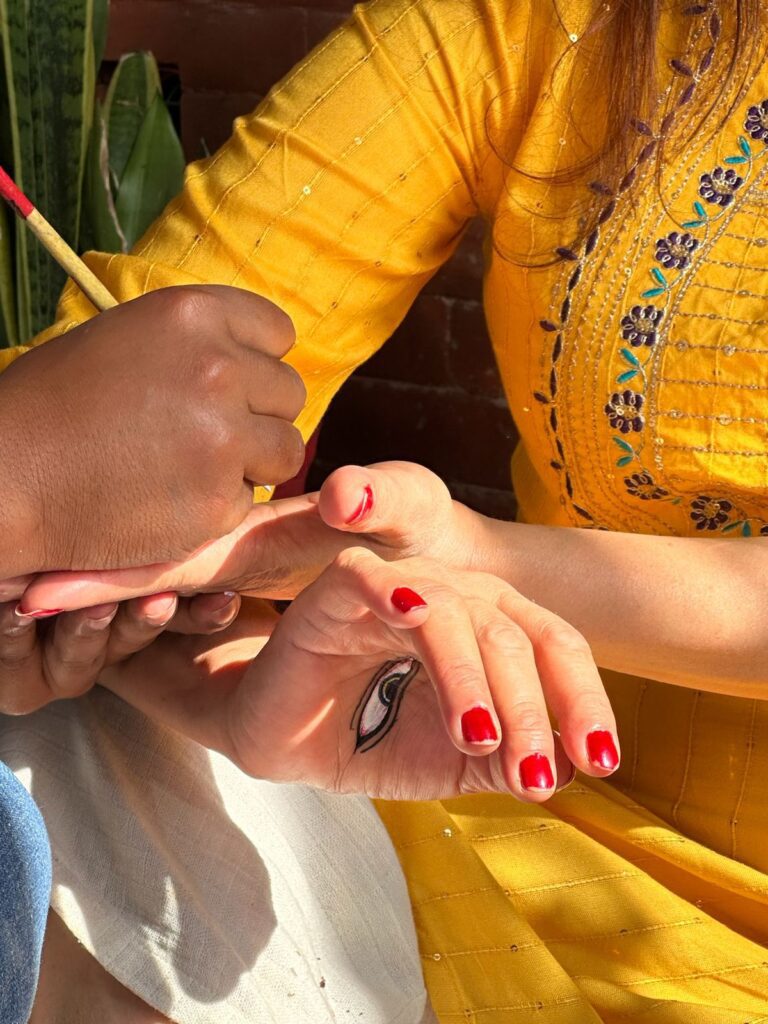
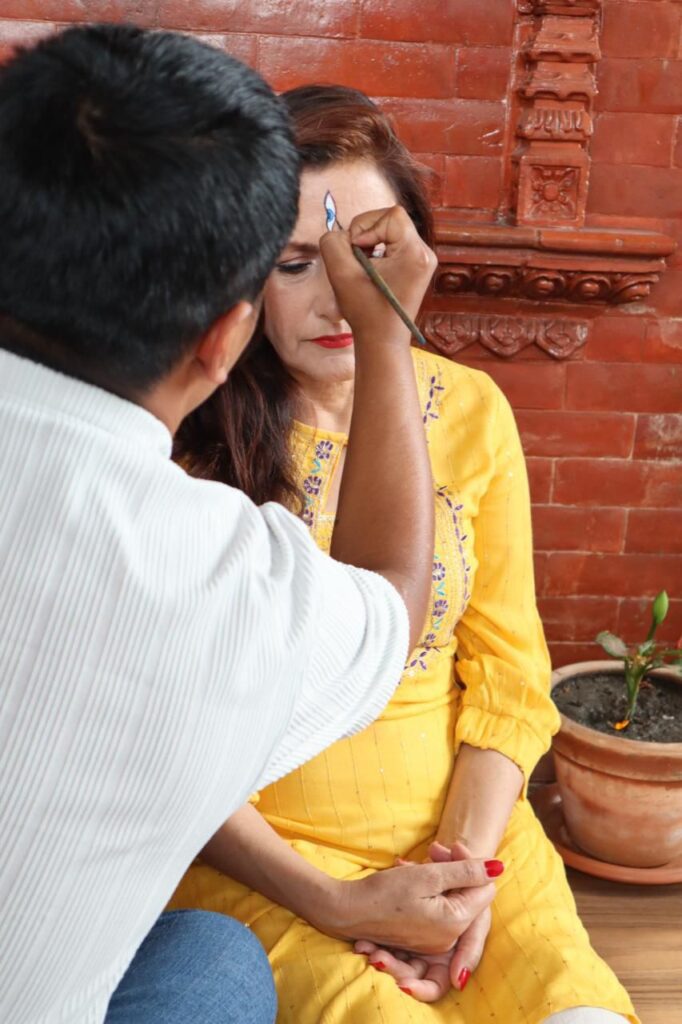
The Newar Vajracharyas of Kathmandu Valley are the traditional Charya practitioners. “Vajracharya” (master of indestructible knowledge) is a title conferred to an accomplished, authentic tantrayana master who is capable of generating and dissolving the deity mandala. This has been passed down through the generations, either through family lineage or through practice lineage.
Although Charya dance remains somewhat secretive, it is gaining academic and popular interest in modern times. This has led many Charya dances to be performed as common cultural dances. However, in modern times, some Tibetan Buddhist gurus have shown keen interest in Charya practice and have encouraged their students, even their non-Newar Nepalese Buddhist practitioners, to take up Charya dance as part of their spiritual practice and development.
What is the connection between Charya dance and Buddhist practice?
Historically, Charya has been an integral part of Buddhist tantra practice; Mahasiddhas composed the “songs of realization” called the Charya Giti songs), which were then acted out and expressed in the dance form through mudras and body movements called the Charya Nritya. Buddhist tantras are classified into Kriya, Charya, Yoga, and Anuttara tantra. However, Charya dance should not be misunderstood as being only a form of Charya tantra.
There are many Charya dances of the highest Annutara tantra level, such as the Vajravarahi, Vajrayogini of the Chakrasambhara tantra, Nairatmya of the Hevajra tantra, and so on.
While Charya has been an integral part of Buddhist tantra practice, Charya dance is not a mandatory or even mainstream form of Buddhist tantra practice, it’s an art form, open to practitioners interested in enhancing their spiritual progress along the dharma path.
There’s often mention of secrecy or esoteric elements in Charya. Can you speak to that?
The secrecy of Charya follows the principle of secrecy of the Buddhist tantra. Esoteric tantrayana teachings and practice are powerful, intuitive, symbolic, emotional, and cognitive transformative methods that require maturity and initiation to understand. When misunderstood, especially its more symbolic or ritual aspects, it can lead to confusion, distorted views, and false understanding. Without a proper grounding and practice, these can easily become misused, causing psychological harm. Just like a naive child playing with a sharp knife!
Tantrayana practices depend heavily on sacredness, keeping the vows and rules intact; this is how it is transmitted from teacher to student. Without that, the practices may lose their lineage power and transformative effect!
Overall secrecy protects the sanctity of the teachings, its intact lineage, preserving the intuitive subtlety and depth of the Charya methods, Buddhist tantra, and related activities like Charya dance are secretive not to hide, but to protect—both the practitioner and the power of the lineage teachings.

How does Charya dance embody the Six Paramitas (generosity, ethics, patience, effort, meditation, wisdom)?
Paramita (Para = far shore, Ita = gone) literally means to cross over from Samsara to Nirvana through the Buddha’s teachings. These six paramitas can be practiced in every field of life when one develops a right view of bodhicitta. I feel Charya dance follows a similar intention and practice.
Generosity (dana) involves performing Charya, which brings enjoyment and happiness to others. It embodies the spirit of giving. Ethical Conduct (shila) is integral to Charya, reflecting a commitment to maintaining shila, sambhar (the “equipment” or “requisites” needed for spiritual progress towards enlightenment), and samayas. This practice demands discipline in all aspects of life—from eating to dressing—promoting awareness of our physical movements and moral behavior. Patience (kshanti) emerges from years of disciplined practice, requiring us to endure the challenges of daily life while continuously engaging in Charya. This consistency fosters the practice of patience. Effort (virya) signifies the determination we put into developing meritorious acts. Regardless of the seasons, we dance barefoot, persistently sweating and feeling tired, yet we are undeterred by happiness or suffering, allowing us to keep the highs and lows of life beneath our feet as we practice our dances day and night. Concentration (dhyana) is realized when one embodies the deity, synchronizing body movements with the dance to maintain strong focus. Engaging in this dance transcends mere performance; it becomes a meditative practice akin to sitting on a cushion. Lastly, wisdom (pragya; prajna) is cultivated during Charya as one’s mind remains aware of the respective deity. The gestures (mudras) and body movements transform into the essence of the deity, the sound and melody of the song become a mantra, and the ground beneath us takes on the significance of the deity’s mandala and retinue. In this process of merging with the deity, all elements transform into intuitive knowledge (pragya; prajna). This is how I see Charya dance as the practice of the Six Parmitas.
How would you describe Charya dance as a form of moving meditation?
Charya dance is a form of deity yoga. Through the movements, practitioners transform themselves and embody the deity with their attributes, qualities, energy, and wisdom, harmonizing with the body, speech, and mind with that of the deity. The movements of the dance are deliberate and symbolic of the deity. The mudras, postures, and movements are all connected with the subtle energy channels (nadi) and the energy centers (chakras). The nadis are related to the five basic elements of the body (earth, water, fire, wind, and space), which further correspond with the five destructive emotions (craving, hatred, jealousy, arrogance, and confusion). These emotions, then, are ultimately transformed into the Five Buddha wisdoms.
Unlike the “dynamic meditation,” which is more a form of catharsis and release of energy, Charya dance, to the contrary, is a transformative and repetitive performance that polishes the intuitive wisdom of the “as-it-is-ness” (Tathata).
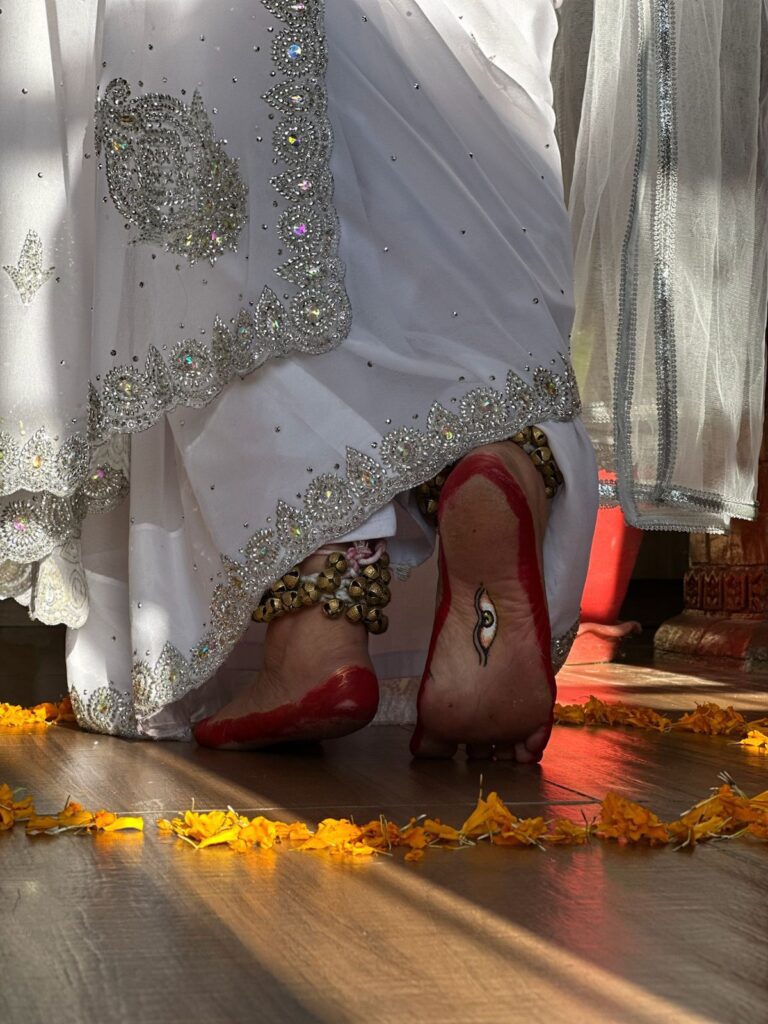
What kind of inner transformation or awareness arises for you during the practice?
On the physical and emotional level, it connects me with my own physical elements and makes me grounded and emotionally stable. I get attuned to the innate awareness of the deity. This helps me to be in touch with my being in the here and now and gives me bliss and joy.
How do you integrate your dance practice with your life as a mother, wife, beautician, makeup artist, and singer? How do all these come together in your life and practice?
Charya practice helps me enhance my awareness and energy, which allows me to give my all to every task in my day-to-day life. The roles and duties I carry out in society. It gives me the joy of living!
What advice would you give to someone who wants to begin exploring Charya dance — not just as an art, but as a spiritual practice?
Charya dance is a beautiful form of art. However, if you synchronize with the awareness of the deity, then you will be able to feel the real essence of this form of dance. It’s like the difference between having a plastic flower and a real, fresh flower.
So, unless and until you experience the meditative art form of this dance, it will be challenging to figure out what it’s all about. This becomes something like explaining the taste of sweet candy to those who have never tasted sugar!
